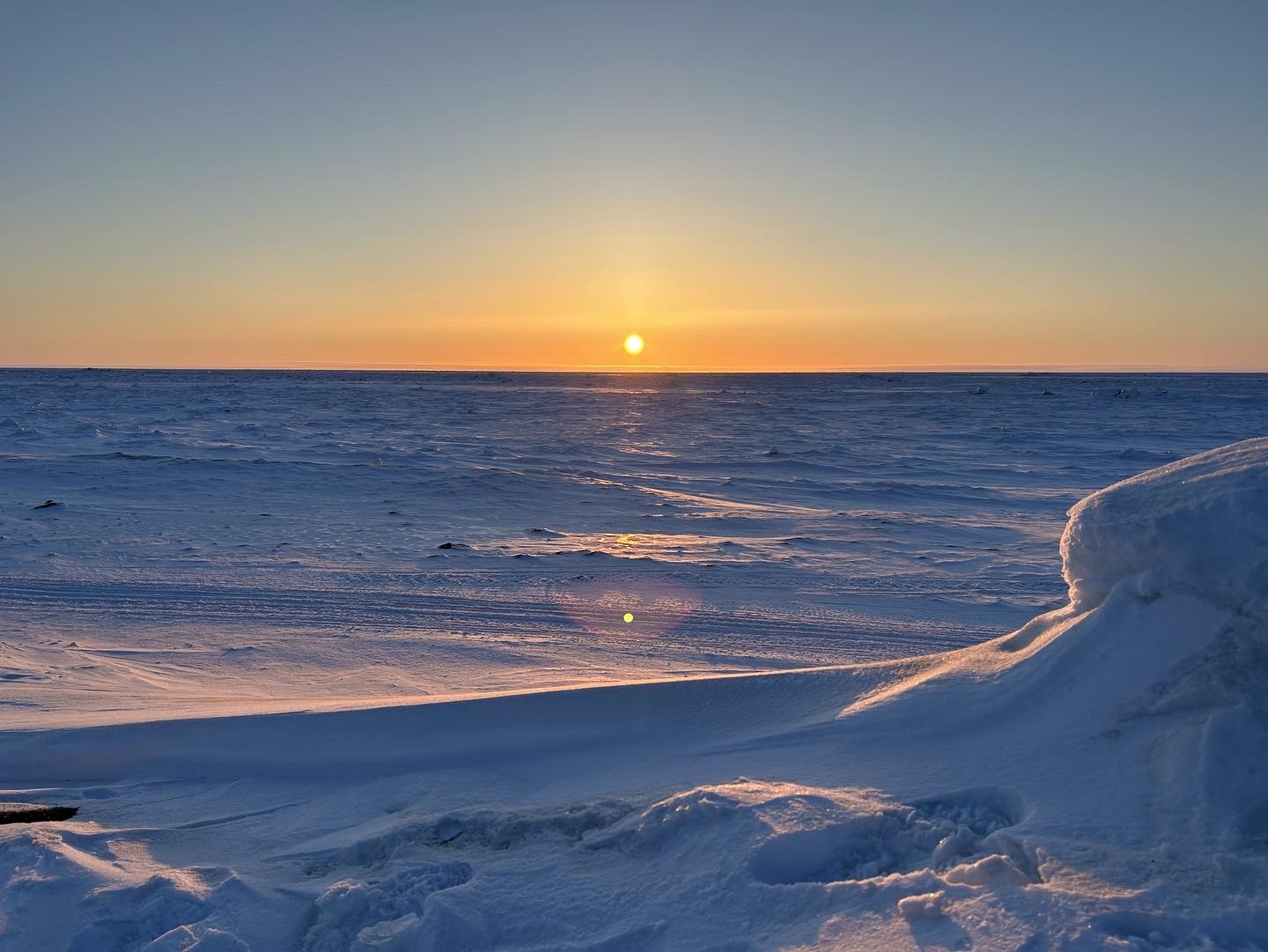
Credit: Daniel Fraser, CC BY-SA 4.0.
This post is part of the LTER’s Short Stories About Long-Term Research (SSALTER) Blog, a graduate student driven blog about research, life in the field, and more. For more information, including submission guidelines, see lternet.edu/SSALTER
By Mathea Kurtz-Shaw
Whenever I meet someone new and the inevitable topic of “what I do” comes up, my response is often met with confusion.
“So what do you do?”
“I’m a grad student at the University of Texas Marine Science Institute.”
“Cool! What do you study?’
“I study tiny animals and algae that live in the mud at the bottom of lagoons on the North Coast of Alaska.”
“Wait, what? Alaska, but I thought you said you went to school in Texas!”
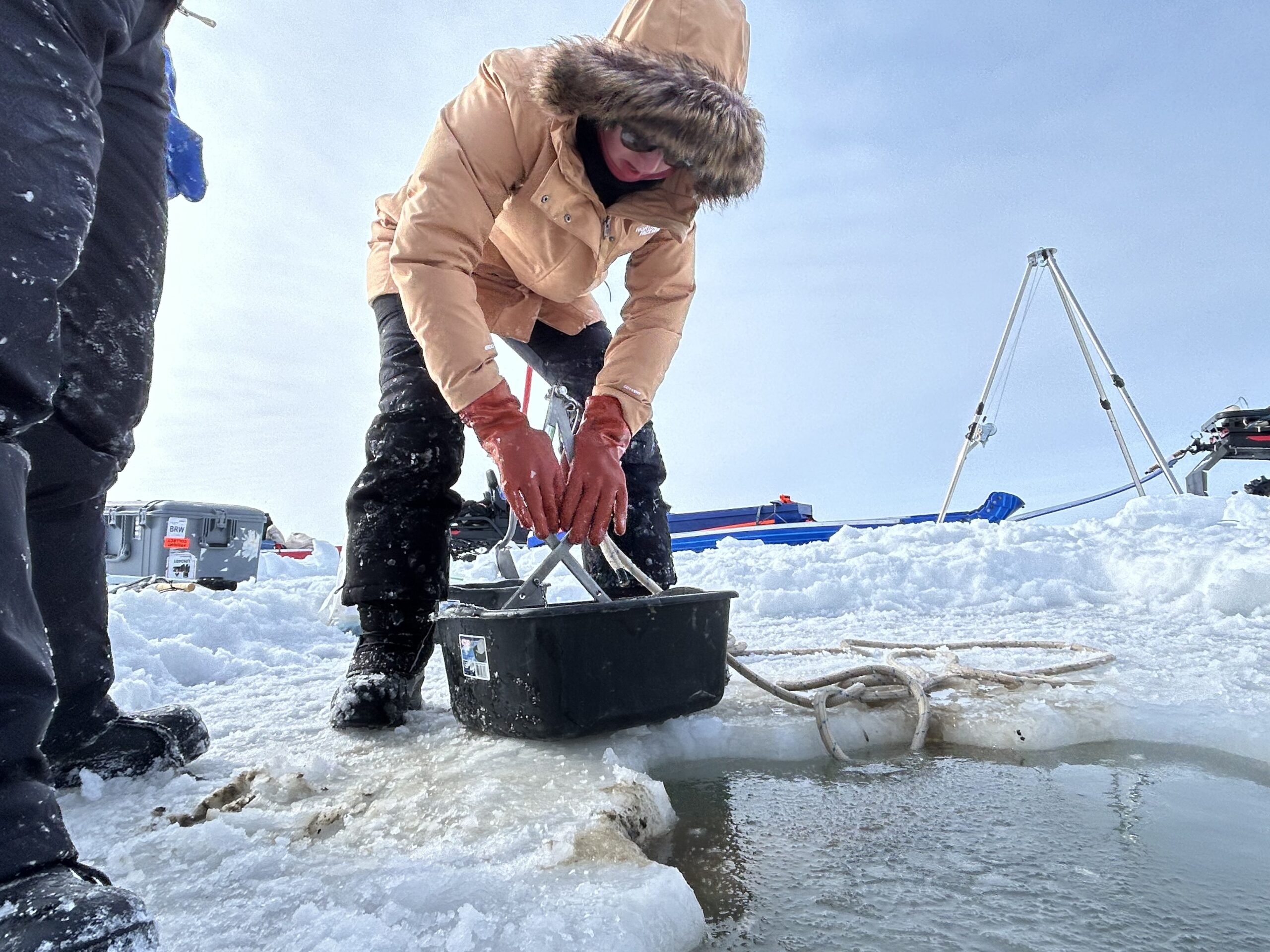
Credit: Daniel Fraser, CC BY-SA 4.0.
Being a Beaufort Lagoon Ecosystems LTER graduate student and researching in two completely different places can be as confusing for me as it is for other people. Traveling the 3,743 miles from Port Aransas, Texas to Utqiagvik, Alaska and other areas on the North Slope can be both mentally and physically taxing. I find myself frequently shifting focus from Texas-based course material to Arctic sampling and processing methods. My body becomes confused as it switches to 24-hour daylight and then the shock of seeing a sunset again on the journey home.
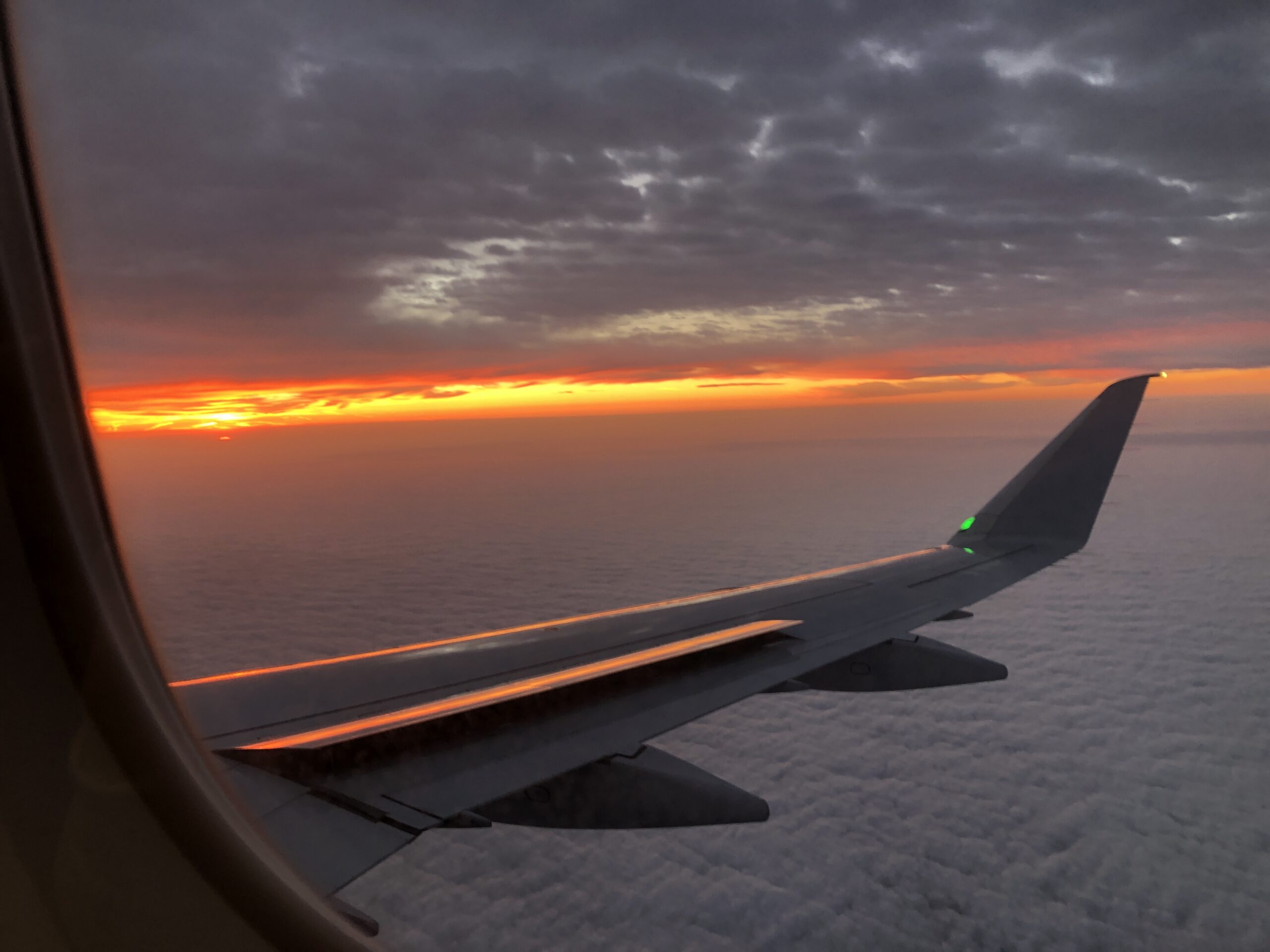
Credit: Mathea Kurtz-Shaw, CC BY-SA 4.0.
On the surface, the Alaska and Texas coasts could not be more different. The Beaufort Sea coastline sees heavy snowfall, frozen lagoons, and 24-hour darkness for much of the year. The Texas Gulf Coast rarely sees a cloudy day or a dip below 50°F. 25% of Texas’s 30 million people live on the coast while 10,600 people call Alaska’s North Slope Borough home. Yet with all of these differences, both are communities inherently tied to the ocean. Whether it’s recreational, subsistence, or commercial, the people of both Port Aransas and the North Slope are constantly interacting with their local waters. Many community members rely on their local estuaries for food and to make a living.
While this reliance on the ocean exhibits itself differently within each culture, I have had the privilege of talking with many people in both locations that are curious about what is happening beneath the surface of their local waters and how they are changing. Even though my research looking at microalgae and invertebrates buried in the sediment is far from what they are usually asking about, I am able to talk about the connections and structure of these complex ecosystems and how we as humans are impacting them. Their curiosity and concern inspire me to dig deeper into what previous generations of locals and scientists have learned and to continue listening intently to those who are witnessing the impacts on their local ecosystems every day.
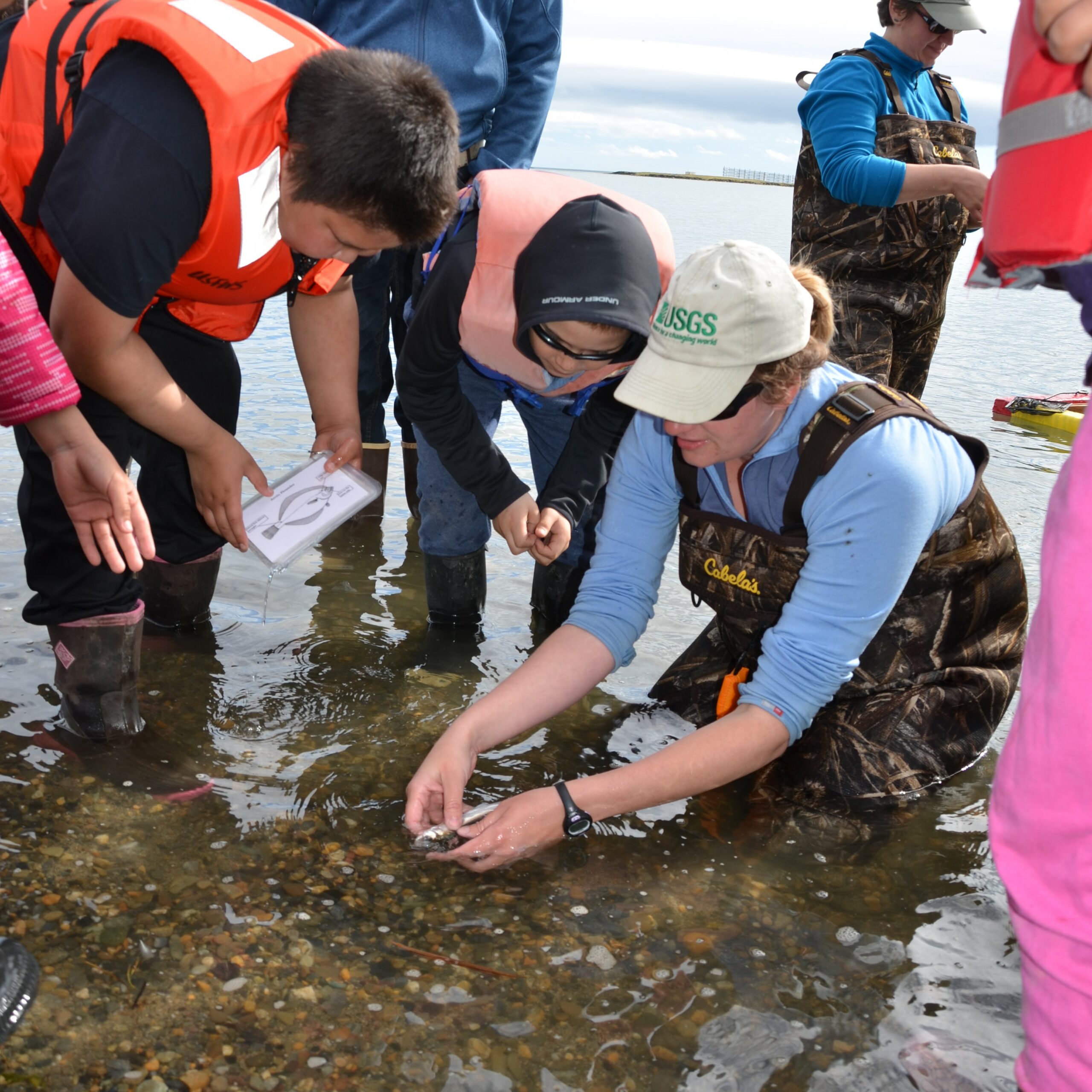
Credit: Ken Dunton, CC BY-SA 4.0.
(Photo 4) Credit: Ken Dunton, BLE LTER. Students in Alaska examining a lagoon fish with a BLE Scientist as part of the Kaktovik Oceanography Program.
In particular, the questions that children of these different places ask about their local environment challenge me to be more fully present to what I witness each day in these communities. I have had the pleasure of teaching kids in both Alaska and Texas about the amazing lagoon ecosystems of the Arctic. While the classrooms start with very different understandings of what these lagoons are like, both are filled with so many questions. One of the activities the kids found most exciting was all about salinity. They measured the saltiness of different water and then tried to make their own “saltwater” to match. The kids wanted to know all about how different creatures would respond to the salinity of water and what could cause salinity to change in their environment. Their insatiable curiosity reminds me of the privilege I have in observing and participating in these communities, whether it’s in the Texas heat or the chilled air of the Arctic.

Credit: Mathea Kurtz-Shaw, CC BY-SA 4.0.
So the next time someone shoots me a confused expression when I tell them “what I do,” I’ll remind them that there are probably a lot more things connecting coastal Texas and Alaska than they might think.
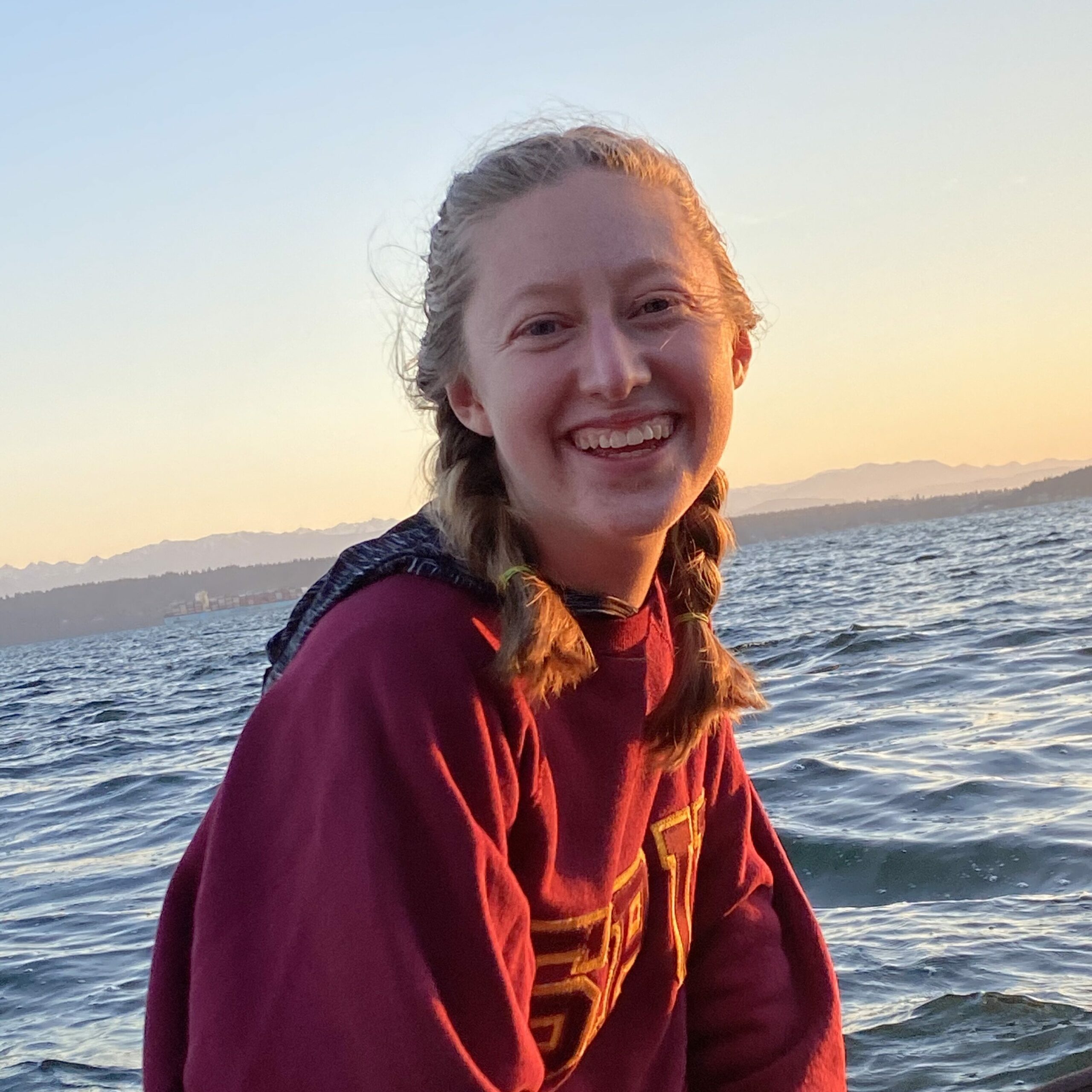
Mathea Kurtz-Shaw is a second-year graduate student in Ken Dunton’s lab at UT Austin Marine Science Institute. Her research on the Beaufort Lagoon Ecosystems LTER focuses on the seasonal effects of ice cover on the benthic food web, particularly microalgae and invertebrates.










